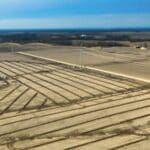The state of the farm economy has certainly seen better times. After accounting for input costs, farmers and ranchers received only eight cents out of every dollar spent on food in the U.S. in 2019, according to the American Farm Bureau. The remainder was attributed to costs beyond the farm gate: wages and materials for production, processing, marketing, transportation and distribution. Enter 2020: trade war effects, the COVID pandemic, and natural disasters. This year has really delivered a wallop, and Ag economists have offered a rather bleak forecast for 2020 and 2021 U.S. farm profits. So what should you do to combat today’s challenging Ag environment and improve Farm Resilience?
Financial Management Dictates Farm Resilience & Survival
Making sound decisions on your farm or ranch is essential to healthy operations, and it becomes critical to maximize those decisions with an intentional farm management strategy.
“Farmers and ranchers are accustomed to stressors and unanticipated events, and if anyone can push through this and come out strong, it’s them,” says Thomas Eatherly, AgKnowledge financial consultant at K·Coe Isom.
“It can’t be done by resting on your laurels though, or what has worked in the past. You’ll need to take proactive action with your financials to secure it.”
Below, Eatherly highlights three key areas to focus on:
- Take farm management and operations to the next level. When it comes to business, there is no sense in worrying about a task that you can control. We’re all aware that the market is super volatile, weather is unpredictable, and repairs are “sometimes” unpreventable.
- “Operate as a business that accidentally farms, not a farm that accidentally runs a business. Intentionally implement a professional work environment, follow best practices, encourage work life balance, and work up standard operating procedures (SOPs).”
- Track performance with dashboards. Turn your numbers into strategic business power.
-
- “Know your business’s business! Break evens, cash flow, capital expenditure budget – these are your crystal ball to provide business insights for effective decisions. Pick a couple of ratios to start watching, and surround yourself with professional advisors who act like they are owners in your business, and not the local coffee shop advisors.”
- Manage and use your data to your advantage. This is essential for mitigating risks and producing results.
- “Understand your production potential by farm. This is crucial to understand when the next rental agreement comes up for negotiations. Know when you walk away, and know when to say ok.”
If you need a proactive partner to evaluate and manage your financial and farm-operation options, maximize performance, or uncover threats to profitability, K·Coe has the resources and expertise – we call it ‘AgKnowledge’ – that produce results. Contact a K·Coe advisor to get started.












